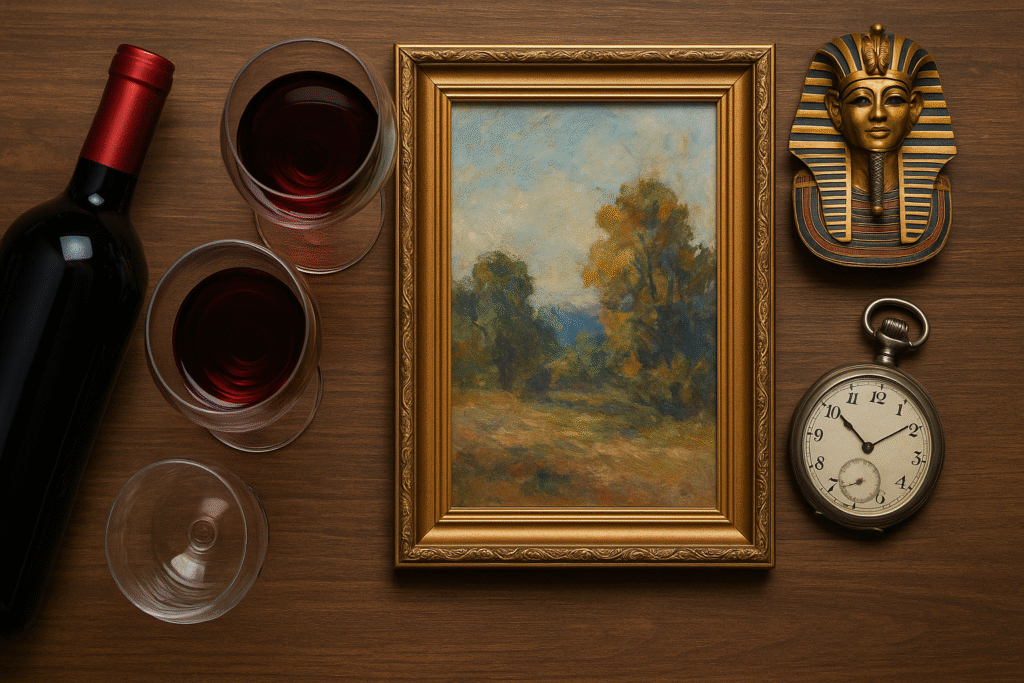Learn about investing in wine, art, and collectibles in the U.S.

When people think about investing, stocks, bonds, or real estate usually come to mind. But in recent years, alternative investments like fine wine, art, and collectibles have gained momentum in the United States.
These assets are attractive because they combine passion with potential profit. However, they also come with unique risks, making knowledge and strategy essential.
In this article, we’ll explore how to invest in wine, art, and collectibles in the U.S., what makes each market unique, and practical steps to get started.
Why Consider Alternative Investments?
Alternative assets like wine, art, and collectibles don’t always move in tandem with the stock market.
This means they can provide diversification to your portfolio, reducing overall risk. Additionally, they often appeal to investors who value tangible assets and want to combine financial growth with cultural or personal interests.
That said, these markets are less liquid and less regulated than traditional investments, which makes research and patience especially important.
Investing in Fine Wine
How it Works
Fine wine has become a recognized asset class, supported by specialized platforms, indices, and storage facilities. Investors purchase bottles or cases of investment-grade wines, usually from prestigious regions like Bordeaux, Burgundy, or Napa Valley. Over time, scarcity and quality can drive prices upward.
Ways to Invest
- Direct Purchase: buy bottles yourself and store them professionally. Proper storage is critical; wine kept in poor conditions loses value quickly;
- Wine Funds and Exchanges: platforms like Vinovest or Cult Wines allow investors to buy shares of professionally managed wine portfolios;
- Auction Houses: sotheby’s and Christie’s frequently host wine auctions for rare vintages.
Risks and Rewards
The fine wine market has shown steady long-term growth, but prices can fluctuate based on vintage quality, global demand, and economic conditions. Fraud and counterfeit bottles are also real risks, underscoring the need for reputable sources.
Investing in Art
Why Art Appeals to Investors
Art is not just a cultural treasure, it’s a multibillion-dollar global market. Blue-chip artists such as Picasso or Basquiat command extraordinary sums, but there’s also growing interest in contemporary and emerging artists.
How to Get Started
- Purchase Directly: buy from galleries, art fairs, or auctions. Always request provenance and authenticity certificates;
- Fractional Ownership: platforms like Masterworks allow investors to buy shares of high-value artworks without needing millions of dollars upfront;
- Art Funds: Similar to mutual funds, art funds pool capital from investors to acquire and manage collections.
Key Considerations
Art prices can rise dramatically, but they can also remain stagnant for years. The art market is less transparent than stock exchanges, with valuations often dependent on trends and collector tastes. Investors should view art as a long-term, high-risk, high-reward asset.
Investing in Collectibles
What Counts as Collectibles?
Collectibles cover a wide spectrum, rare coins, stamps, sports memorabilia, luxury watches, vintage cars, even Pokémon cards. The common thread is scarcity, demand, and cultural significance.
Entry Points
- Direct Collecting: Start small with categories you understand and enjoy;
- Specialized Auctions: Heritage Auctions, eBay, and others offer platforms for rare items;
- Online Marketplaces: Newer platforms like Rally or Otis let you invest in fractional shares of collectibles.
Market Dynamics
Unlike stocks, collectibles don’t generate cash flow; their value depends entirely on resale prices. Market sentiment, pop culture trends, and generational interests all play a role. For example, millennials have driven up prices for trading cards and sneakers.
Final Thoughts
Investing in wine, art, and collectibles in the United States can be both rewarding and enjoyable. These alternative assets bring a sense of personal connection and cultural engagement to a portfolio, while also offering diversification and potential profit.
However, they are not for everyone. Patience, expertise, and trusted advisors are key to navigating these markets successfully.
If you approach them strategically, you won’t just be an investor, you’ll also be a steward of cultural and historical value.

